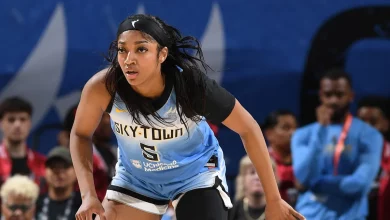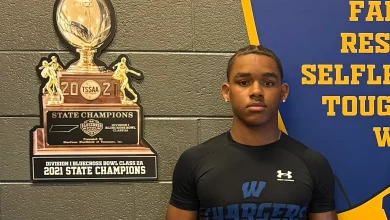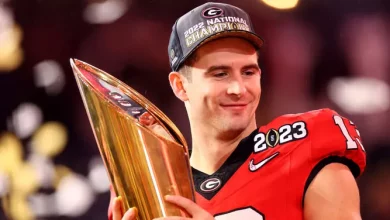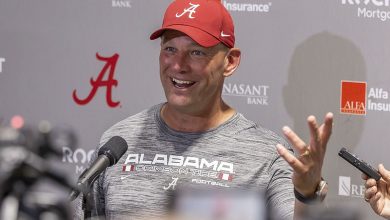Chicago Bears’ Biggest Offseason Dilemma: Is D’Andre Swift Still Their Lead Back?
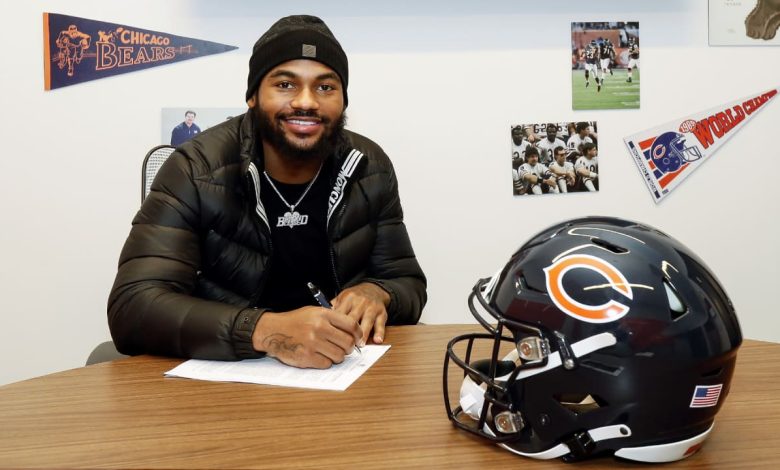
As the Chicago Bears continue to rebuild and focus on improving their roster, one of the most pressing questions surrounding the team during the offseason is the future of the running back position. Despite having an incredibly talented roster of young players, the Bears’ ground game remains a major focal point for 2025 and beyond. At the heart of this dilemma lies D’Andre Swift, the talented but somewhat inconsistent running back who was acquired in a trade during the offseason.
Swift’s potential has been clear since he entered the league as a highly touted prospect out of the University of Georgia, but questions about his ability to stay healthy, his inconsistency at times, and his fit in the Bears’ evolving offensive system leave the front office with a critical decision: Is D’Andre Swift still their lead back, or is it time to look elsewhere for a more reliable, consistent option in the backfield?
This article takes a deep dive into D’Andre Swift’s role with the Bears, evaluating his skill set, injury history, the team’s evolving offensive strategy under head coach Matt Eberflus, and the possibilities for the future of the running back position in Chicago.
The Rise of D’Andre Swift: A Glimpse at His Potential
Swift’s journey to the NFL began with a stellar career at Georgia, where he was known for his explosive playmaking ability, elusiveness in the open field, and versatility as a runner and receiver. Drafted by the Detroit Lions in the second round of the 2020 NFL Draft, Swift entered the league with high expectations and quickly showed flashes of brilliance. He finished his rookie year with over 1,000 total yards and 10 touchdowns, with impressive performances that showcased his ability to be both a primary ball carrier and a dangerous receiving threat out of the backfield.
However, Swift’s career in Detroit was marked by moments of brilliance paired with frustrating injury issues. Throughout his three years with the Lions, Swift struggled to stay on the field, with ankle, shoulder, and groin injuries plaguing his time in Detroit. Despite showing signs of being one of the league’s most explosive backs when healthy, Swift’s inability to stay fully healthy prevented him from reaching his full potential.
In 2024, the Bears took a chance on Swift, hoping to unlock the talent that many believed he could consistently showcase if given the right opportunity and the right supporting cast. His trade to Chicago presented both the team and Swift with a fresh start, one that brought new expectations and new questions about his role on the roster.
Swift’s Fit in Chicago’s Offense: A Changing System
Under head coach Matt Eberflus, the Chicago Bears have gradually moved toward a more dynamic and multifaceted offensive scheme, seeking to build a balanced attack that combines Justin Fields’ mobility at quarterback with a diverse and potent running game. This scheme is rooted in the principles of the West Coast offense, which focuses on short-to-medium-range passing, quick decisions, and an emphasis on running backs who can catch passes and make plays in space. Swift’s skills as both a runner and a receiver make him a natural fit for this type of offense, as he can create mismatches in the passing game, as well as gain significant yardage on the ground.
For all of Swift’s potential, however, the Bears’ offense is still evolving. With Justin Fields emerging as one of the most exciting young quarterbacks in the league, his ability to make plays with his legs creates both opportunities and challenges for the running back position. While Fields’ mobility allows for design runs and scrambles that can open up the field for running backs, it also means that opposing defenses often focus on limiting Fields as a runner, making it crucial for the Bears to have a reliable and dynamic ball-carrier who can capitalize on the opportunities left behind.
Additionally, the Bears’ offensive line is still a work in progress. While they have made moves in recent years to bolster the line and improve the protection for both Fields and Swift, consistency has been a concern. Swift’s ability to create his own yards in tight spaces — whether it’s breaking tackles or shifting through the line of scrimmage — could be crucial to the team’s success in 2025.
The Running Back Landscape in Chicago: Is Swift the Answer?
While Swift is undoubtedly one of the most talented backs the Bears have had in recent years, the questions surrounding his ability to lead the backfield persist. At the center of this dilemma are concerns about injury history, consistency, and whether Swift is capable of being the reliable, workhorse back that the Bears need.
Injury Concerns: Can Swift Stay Healthy?
Perhaps the biggest concern for the Bears is Swift’s injury history. Over his three years with the Detroit Lions, Swift missed a total of 10 games due to injuries. These injuries were not only frequent but were also relatively varied, ranging from groin injuries to shoulder issues to ankle sprains. The fact that Swift has struggled to stay on the field for a full season raises a red flag for the Bears, especially given that running back is a position that often sees high levels of wear and tear.
In an offense that relies on its running back to handle a large workload, both as a ball-carrier and a receiving threat, Swift’s durability will be a major factor in whether he can remain the lead back. Injuries have already hampered his ability to establish a rhythm, and the Bears cannot afford to rely on a player who might miss multiple games in any given season.
To mitigate these risks, Chicago may consider a committee approach, which would allow Swift to share the load with another back to reduce his workload and keep him healthy throughout the season. This approach would also give the Bears more flexibility in terms of play-calling, allowing them to use a variety of backs depending on the game situation.
Inconsistency: Can Swift Be More Than Just a Flash of Brilliance?
Another concern for the Bears is Swift’s consistency. While Swift has undoubtedly flashed elite talent at times, he has also been somewhat erratic throughout his career. There have been stretches where he has looked like one of the best running backs in the league, but there have also been stretches where he has struggled to make an impact. This inconsistency raises questions about whether he can be trusted to lead the backfield for an entire season.
For the Bears, this inconsistency could be a crucial issue, especially considering that Matt Eberflus and offensive coordinator Luke Getsy will want a dependable option in the backfield to complement the passing game. The last thing the Bears need is a running back who is hot one week and cold the next. The team will likely need Swift to be far more consistent in order for him to retain his role as the lead back.
Competition and Depth: Who Else Is in the Mix?
While Swift’s talent is undeniable, the Bears are not without options in the backfield. Beyond Swift, the team has a handful of promising running backs who could challenge for the lead role, including Khalil Herbert and Roschon Johnson.
Khalil Herbert has shown flashes of brilliance during his time in Chicago, providing strong yardage both as a runner and as a receiver. While Herbert’s talents are undeniable, he hasn’t yet proven that he can carry the load as a full-time back, which leaves questions about his ability to handle the same responsibilities that Swift would.
On the other hand, Roschon Johnson, a rookie running back, has already turned heads with his size, speed, and physicality. Johnson could develop into a key contributor in the Bears’ backfield, especially if Swift struggles with injuries or consistency. Johnson’s versatility, combined with his strong running style, could give the Bears another viable option to pair with Swift or potentially even replace him as the lead back.
The Verdict: Can Swift Be the Lead Back for the Bears?
As the offseason progresses and the 2025 season approaches, the Bears’ dilemma with D’Andre Swift remains one of their most important questions. While Swift has the potential to be the team’s lead back, his health and consistency are ongoing concerns that could prevent him from becoming the reliable workhorse the Bears need. At the same time, the competition in the backfield, particularly from Khalil Herbert and Roschon Johnson, makes it difficult to say for certain that Swift will retain his place at the top of the depth chart.
For the Bears, the key will be finding the right balance between utilizing Swift’s explosive playmaking ability and managing his injury risks and inconsistencies. Whether or not he remains the lead back may ultimately depend on how he performs during training camp and the preseason, with the team closely monitoring his health and performance. Swift’s potential is clear, but for him to succeed in Chicago, he will need to prove that he can be both healthy and consistent over the course of an entire season. Until that happens, the Bears may be best served by utilizing a committee approach and allowing their other backs to compete for the role.
In the end, the decision to make Swift the lead back or to look elsewhere will have a significant impact on the Bears’ offensive identity. Their success in 2025 could depend on whether Swift can rise to the occasion or whether the team finds a more consistent, durable option to carry the load.



